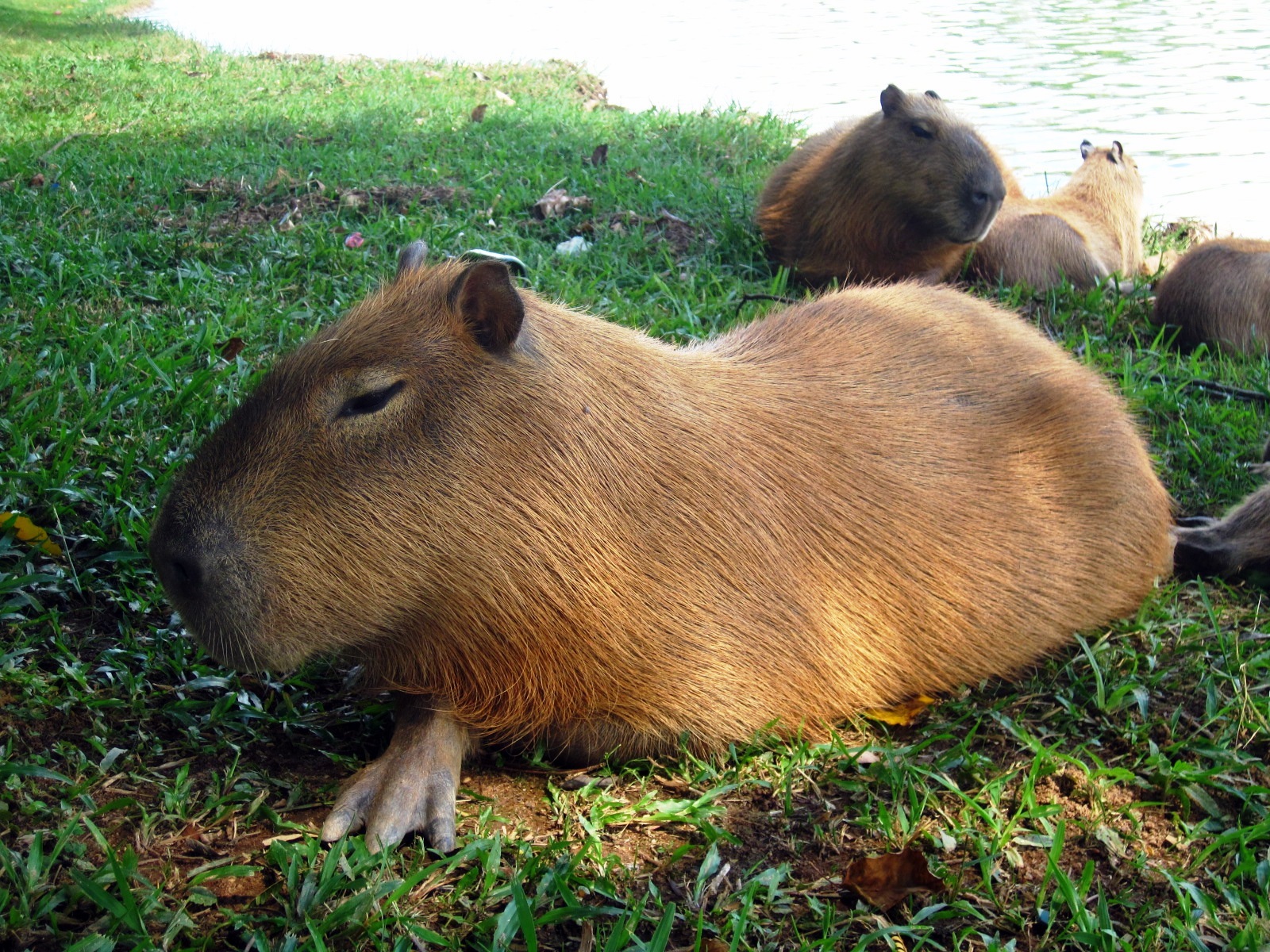|
Painted Buttonquail
The painted buttonquail (''Turnix varius'') is a species of buttonquail, the family Turnicidae, which resemble, but are unrelated to, the quails of Phasianidae. This species is resident in Australia where numbers are believed to be in decline. A subspecies, the Abrolhos painted buttonquail (''Turnix varius scintillans''), is endemic to the Houtman Abrolhos islands. Taxonomy The painted buttonquail was first described by the English ornithologist John Latham in 1801 under the binomial name ''Perdix varia''. "Painted buttonquail" has been designated the official name by the International Ornithologists' Union (IOC). Two subspecies are recognised. The possibly- extinct New Caledonian buttonquail (''Turnix novaecaledoniae'') of New Caledonia was formerly considered conspecific, but was split as a distinct species by the IOC in 2021. Description The painted buttonquail is about long. It is a ground-dwelling bird and is found in grassy forests and woodlands. It feeds ... [...More Info...] [...Related Items...] OR: [Wikipedia] [Google] [Baidu] |
John Latham (ornithologist)
John Latham (27 June 1740 – 4 February 1837) was an English physician, naturalist and author. His main works were ''A General Synopsis of Birds'' (1781–1801) and ''General History of Birds'' (1821–1828). He was able to examine specimens of Australian birds which reached England in the last twenty years of the 18th century, and was responsible for providing English names for many of them. He named some of Australia's most famous birds, including the emu, sulphur-crested cockatoo, wedge-tailed eagle, superb lyrebird, Australian magpie, magpie-lark and pheasant coucal. He was also the first to describe the hyacinth macaw. Latham has been called the "grandfather" of Australian ornithology. Biography John Latham was born on 27 June 1740 at Eltham in northwest Kent. He was the eldest son of John Latham (died 1788), a surgeon, and his mother, who was a descendant of the Sothebys, in Yorkshire. He was educated at Merchant Taylors' School and then studied anatomy under William Hu ... [...More Info...] [...Related Items...] OR: [Wikipedia] [Google] [Baidu] |
New Caledonian Buttonquail
The New Caledonia buttonquail (''Turnix novaecaledoniae'') is a species of bird in the family Turnicidae. It is endemic to New Caledonia. It previously was considered a subspecies of the painted buttonquail. Its natural habitats are dry savanna, subtropical or tropical dry shrubland, and subtropical or tropical dry lowland grassland A grassland is an area where the vegetation is dominated by grasses (Poaceae). However, sedge (Cyperaceae) and rush (Juncaceae) can also be found along with variable proportions of legumes, like clover, and other herbs. Grasslands occur natur .... References {{Taxonbar, from1=Q20720057 Birds of New Caledonia Turnix Birds described in 1889 Taxa named by William Robert Ogilvie-Grant ... [...More Info...] [...Related Items...] OR: [Wikipedia] [Google] [Baidu] |
Endemic Birds Of Australia
This article is one of a series providing information about endemism among birds in the world's various zoogeographic zones. For an overview of this subject see Endemism in birds. Patterns of endemism Family-level endemism is prominent in Australia. The Australasian biogeographic region has the highest number of endemic families of any zoogeographic region except the Neotropics, and many of these families are endemic to Australia itself — the country therefore stakes a strong claim to be the world's greatest hotspot of bird endemism. Australian endemic and near-endemic families The Australian endemic families are: * Emu (Dromaiidae), a well-known monotypic family; the emu is found in rural areas throughout the continent * Plains-wanderer (Pedionomidae), a monotypic family; plains-wanderer is restricted to arid inland areas in the southeast of Australia * Lyrebirds (Menuridae), two forest-dwelling species of southeast Australia * Scrub-birds (Atrichornithidae), two fore ... [...More Info...] [...Related Items...] OR: [Wikipedia] [Google] [Baidu] |
Turnix
Pierre Joseph Bonnaterre Abbé Pierre Joseph Bonnaterre (1752, Aveyron – 20 September 1804, Saint-Geniez-d'Olt) was a French zoology, zoologist who contributed sections on cetaceans, mammals, birds, reptiles, amphibians, fish, and insects to the ''Tableau encyclopéd ... (b. 1752, - 20 September 1804) was a French naturalist. Bonnaterre, Pierre Joseph ... [...More Info...] [...Related Items...] OR: [Wikipedia] [Google] [Baidu] |
Least Concern
A least-concern species is a species that has been categorized by the International Union for Conservation of Nature (IUCN) as evaluated as not being a focus of species conservation because the specific species is still plentiful in the wild. They do not qualify as threatened, near threatened, or (before 2001) conservation dependent. Species cannot be assigned the "Least Concern" category unless they have had their population status evaluated. That is, adequate information is needed to make a direct, or indirect, assessment of its risk of extinction based on its distribution or population status. Evaluation Since 2001 the category has had the abbreviation "LC", following the IUCN 2001 Categories & Criteria (version 3.1). Before 2001 "least concern" was a subcategory of the "Lower Risk" category and assigned the code "LR/lc" or lc. Around 20% of least concern taxa (3261 of 15636) in the IUCN database still use the code "LR/lc", which indicates they have not been re-evaluate ... [...More Info...] [...Related Items...] OR: [Wikipedia] [Google] [Baidu] |
IUCN
The International Union for Conservation of Nature (IUCN; officially International Union for Conservation of Nature and Natural Resources) is an international organization working in the field of nature conservation and sustainable use of natural resources. It is involved in data gathering and analysis, research, field projects, advocacy, and education. IUCN's mission is to "influence, encourage and assist societies throughout the world to conserve nature and to ensure that any use of natural resources is equitable and ecologically sustainable". Over the past decades, IUCN has widened its focus beyond conservation ecology and now incorporates issues related to sustainable development in its projects. IUCN does not itself aim to mobilize the public in support of nature conservation. It tries to influence the actions of governments, business and other stakeholders by providing information and advice and through building partnerships. The organization is best known to the wider ... [...More Info...] [...Related Items...] OR: [Wikipedia] [Google] [Baidu] |
Rottnest Island
Rottnest Island ( nys, Wadjemup), often colloquially referred to as "Rotto", is a island off the coast of Western Australia, located west of Fremantle. A sandy, low-lying island formed on a base of aeolianite limestone, Rottnest is an A-class reserve, the highest level of protection afforded to public land. Together with Garden Island, Rottnest Island is a remnant of Pleistocene dune ridges. Along with several other islands, Rottnest became separated from the mainland around 7,000 years ago, when sea levels rose; the traditional Noongar name for the island is ''Wadjemup'', which means "place across the water where the spirits are". Human artefacts have been found on the island dating back at least 30,000 years, but visitation and habitation of the island by the Noongar people appears to have ceased following its separation from the mainland. The island was first documented by Willem de Vlamingh in 1696, who called it t Eylandt 't Rottenest'' ("Rats' Nest Island") after the qu ... [...More Info...] [...Related Items...] OR: [Wikipedia] [Google] [Baidu] |
Painted Button-quail Chicks, Gunbower Ps
Paint is any pigmented liquid, liquefiable, or solid mastic composition that, after application to a substrate in a thin layer, converts to a solid film. It is most commonly used to protect, color, or provide texture. Paint can be made in many colors—and in many different types. Paint is typically stored, sold, and applied as a liquid, but most types dry into a solid. Most paints are either oil-based or water-based and each has distinct characteristics. For one, it is illegal in most municipalities to discard oil-based paint down household drains or sewers. Clean-up solvents are also different for water-based paint than they are for oil-based paint. Water-based paints and oil-based paints will cure differently based on the outside ambient temperature of the object being painted (such as a house.) Usually, the object being painted must be over , although some manufacturers of external paints/primers claim they can be applied when temperatures are as low as . History Paint was ... [...More Info...] [...Related Items...] OR: [Wikipedia] [Google] [Baidu] |
New Caledonia
) , anthem = "" , image_map = New Caledonia on the globe (small islands magnified) (Polynesia centered).svg , map_alt = Location of New Caledonia , map_caption = Location of New Caledonia , mapsize = 290px , subdivision_type = Sovereign state , subdivision_name = , established_title = Annexed by France , established_date = 24 September 1853 , established_title2 = Overseas territory , established_date2 = 1946 , established_title3 = Nouméa Accord , established_date3 = 5 May 1998 , official_languages = French , regional_languages = , capital = Nouméa , coordinates = , largest_city = capital , demonym = New Caledonian , government_type = Devolved parliamentary dependency , leader_title1 = President of France , leader_name1 = Emmanuel Macron , leader_title2 = President of the Government , leader_name2 = Louis Mapou , leader_title3 = President of the Congress , leader_name3 = Roch Wamytan , leader_title4 = High Commissioner , leader_name4 = Patrice ... [...More Info...] [...Related Items...] OR: [Wikipedia] [Google] [Baidu] |
Extinction
Extinction is the termination of a kind of organism or of a group of kinds (taxon), usually a species. The moment of extinction is generally considered to be the death of the last individual of the species, although the capacity to breed and recover may have been lost before this point. Because a species' potential range may be very large, determining this moment is difficult, and is usually done retrospectively. This difficulty leads to phenomena such as Lazarus taxa, where a species presumed extinct abruptly "reappears" (typically in the fossil record) after a period of apparent absence. More than 99% of all species that ever lived on Earth, amounting to over five billion species, are estimated to have died out. It is estimated that there are currently around 8.7 million species of eukaryote globally, and possibly many times more if microorganisms, like bacteria, are included. Notable extinct animal species include non-avian dinosaurs, saber-toothed cats, dodos, m ... [...More Info...] [...Related Items...] OR: [Wikipedia] [Google] [Baidu] |
Lapsus
In philology, a lapsus (Latin for "lapse, slip, error") is an involuntary mistake made while writing or speaking. Investigations In 1895 an investigation into verbal slips was undertaken by a philologist and a psychologist, Rudolf Meringer and Karl Mayer, who collected many examples and divided them into separate types. Psychoanalysis Freud was to become interested in such mistakes from 1897 onwards, developing an interpretation of slips in terms of their unconscious meaning. Subsequently followers of his like Ernest Jones developed the theme of lapsus in connection with writing, typing, and misprints. According to Freud's early psychoanalytic theory, a lapsus represents a bungled act that hides an unconscious desire: “the phenomena can be traced back to incompletely suppressed psychical material...pushed away by consciousness”. Jacques Lacan would thoroughly endorse the Freudian interpretation of unconscious motivation in the slip, arguing that “in the ''lapsus'' it i ... [...More Info...] [...Related Items...] OR: [Wikipedia] [Google] [Baidu] |
International Ornithologists' Union
The International Ornithologists' Union, formerly known as the International Ornithological Committee, is a group of about 200 international ornithologists, and is responsible for the International Ornithological Congress and other international ornithological activities, undertaken by its standing committees. International Ornithological Congress The International Ornithological Congress series forms the oldest and largest international series of meetings of ornithologists. It is organised by the International Ornithologists' Union. The first meeting was in 1884; subsequent meetings were irregular until 1926 since when meetings have been held every four years, except for two missed meetings during and in the immediate aftermath of the Second World War. Meetings See also * '' Birds of the World: Recommended English Names'', a book written by Frank Gill Frank Gill may refer to: * Frank Gill (Australian footballer) (1908–1970), Australian rules footballer with Carlton * Fran ... [...More Info...] [...Related Items...] OR: [Wikipedia] [Google] [Baidu] |

_(8967632085).jpg)



.jpg)